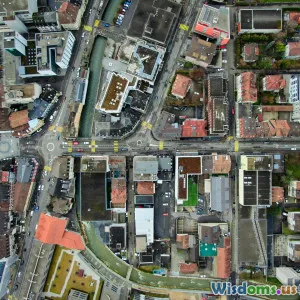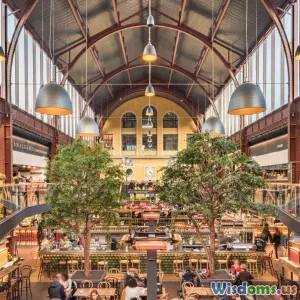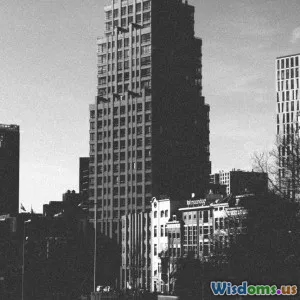
The Role of Parks in City Life
6 min read Explore how parks enrich urban living, fostering community, well-being, and environmental sustainability. (0 Reviews)
The Role of Parks in City Life
Parks serve as the lungs of urban environments, providing essential green spaces that contribute significantly to the quality of life in cities. They are not just patches of grass or playgrounds; they are vibrant ecosystems that support community engagement, promote mental well-being, and enhance environmental sustainability. This article delves into the multifaceted role parks play in city life, highlighting their importance in urban design and architecture.
The Historical Context of Urban Parks
The concept of public parks dates back to ancient civilizations, but it was during the 19th century that parks became integral to urban planning. Inspired by the Romantic movement, cities began to incorporate parks as a response to the industrial revolution's pollution and overcrowding. The creation of Central Park in New York City in 1858 marked a significant milestone, establishing a model for urban parks worldwide. Today, parks continue to evolve, adapting to the needs of modern urban populations.
Benefits of Parks in Urban Settings
1. Enhancing Mental Health
Numerous studies have shown that access to green spaces can significantly improve mental health. Parks provide a retreat from the hustle and bustle of city life, offering a serene environment for relaxation and contemplation. Activities like walking, jogging, or simply enjoying nature can reduce stress, anxiety, and depression. Moreover, parks often serve as venues for community events, fostering social connections that contribute positively to mental well-being.
2. Promoting Physical Activity
Parks encourage physical activity among residents. With facilities for sports, walking trails, and playgrounds, they offer diverse opportunities for exercise. Regular physical activity is crucial for maintaining a healthy lifestyle, and parks make it accessible to everyone, regardless of socio-economic status.
3. Fostering Community Connections
Parks act as communal hubs where people from diverse backgrounds can meet and interact. They host various events, from farmers' markets to music festivals, that bring residents together and cultivate a sense of community. This social cohesion can lead to increased civic engagement and a stronger sense of belonging among residents.
4. Environmental Impact
Beyond their social benefits, parks play a critical role in environmental sustainability. They help combat urban heat, improve air quality, and manage stormwater. Trees and vegetation in parks absorb pollutants, provide shade, and reduce the urban heat island effect. Furthermore, parks contribute to biodiversity, offering habitats for various species in otherwise concrete-dominated landscapes.
Design Principles for Effective Urban Parks
The effectiveness of parks in enhancing urban life largely depends on their design. Here are some key principles:
1. Accessibility
Parks should be easily accessible to all residents. This includes strategic placement within neighborhoods, ensuring they are reachable by walking or public transportation. Incorporating features like ramps and wide pathways can accommodate individuals with disabilities.
2. Inclusivity
Designing parks that cater to diverse age groups and interests is crucial. Incorporating features such as playgrounds, fitness areas, and quiet zones ensures that everyone can find enjoyment in the space. Providing facilities for various activities promotes inclusivity and encourages more community members to visit.
3. Sustainability
Sustainable practices in park design, such as using native plants, employing rain gardens for stormwater management, and incorporating renewable energy sources for lighting, can enhance the environmental benefits of parks while reducing maintenance costs.
4. Safety and Comfort
A well-designed park prioritizes safety and comfort. Adequate lighting, visible sightlines, and well-maintained facilities create a welcoming atmosphere. Regular maintenance ensures that parks remain clean and functional, encouraging more frequent use.
The Future of Urban Parks
As cities continue to grow, the role of parks will become even more critical. Urban planners and architects must prioritize green spaces in their designs to address the challenges of urbanization. Innovations like vertical gardens and rooftop parks are emerging trends that maximize limited space while providing the benefits of green areas.
Incorporating technology, such as smart lighting and interactive installations, can enhance the user experience and facilitate community engagement.
Conclusion
Parks are essential components of urban life, serving as spaces for recreation, relaxation, and community connection. Their role extends beyond mere aesthetics; they contribute significantly to mental and physical health, environmental sustainability, and social cohesion. As urban areas continue to evolve, prioritizing the design and maintenance of parks will be crucial for fostering livable, vibrant cities. By investing in parks, we invest in the well-being of our communities and the health of our environment.
Rate the Post
User Reviews
Popular Posts





















